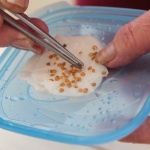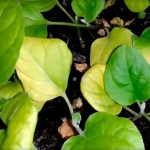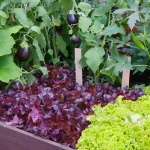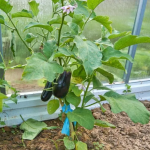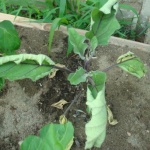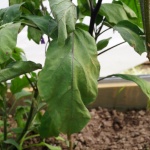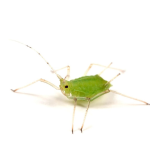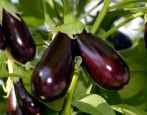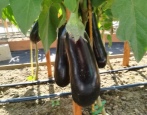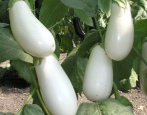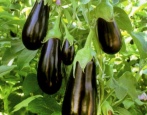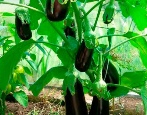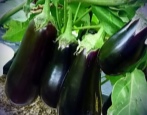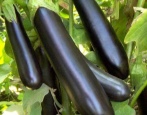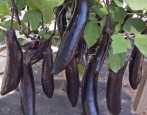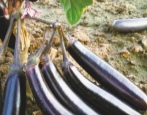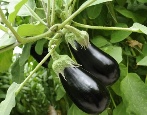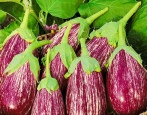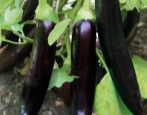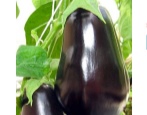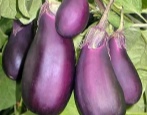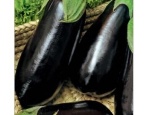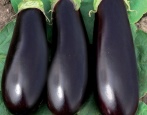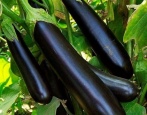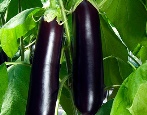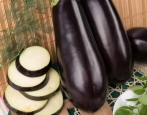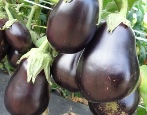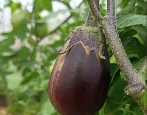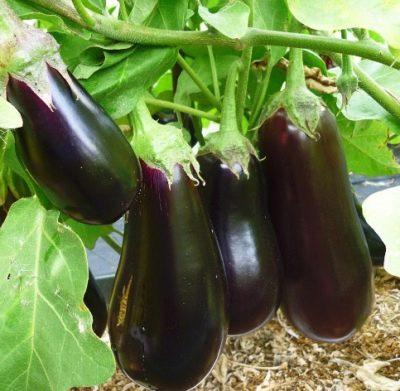
- Authors: Seminis
- Name synonyms: Epic
- Year of approval: 2008
- Growth type: vigorous
- Bush height, cm: 90-100
- Fruit shape: cylindrical
- Fruit weight, g: 220-230
- Yield: high yielding
- Fruit color: dark purple
- Marketability: high
Epic is one of the most productive, healthy and practical eggplant varieties. It is characterized by such qualities as unpretentious care, excellent presentation, high yield and versatility in application. In addition, the cultivar has a robust resistance potential against a range of common crop diseases.
Breeding history
The basic culture Epic was obtained by the specialists of the Dutch company Seminis in 2005. Epic has excellent adaptive potential, and therefore can be grown in various climatic conditions. An early ripe hybrid of the culture, entered in the State Register in 2008, successfully ripens both in greenhouses and in open ground.
Description of the variety
This high-yielding crop is versatile, used in various types of processing, it is well preserved and widely used in cooking. Another variety has excellent commercial qualities.
Of the advantages of culture, it is worth noting:
- high yield;
- unpretentious cultivation;
- a good level of resistance to diseases typical of the species;
- resistance to sharp temperature fluctuations;
- excellent taste;
- wonderful marketability of fruits.
Fruits of dietary orientation are low in calories, rich in vitamins, proteins and potassium. They do not lose useful properties in the processed form.
Minuses:
- cultivation in cool latitudes takes place in seedlings or with the help of seeds in greenhouses;
- the need for a garter bushes;
- short shelf life at home.
Characteristics of the appearance of plants and fruits
Vigorous and semi-sprawling bushes of the culture grow up to 90-100 cm. Anthocyanin-colored stems have medium pubescence. The leaves are medium in size, greenish in color. The eggplant cups show infrequent thorns.
Fruits are dark purple in color and cylindrical in shape. Length - up to 21 cm, diameter - 10 cm, weight - 220-230 g. The surface of the eggplants is glossy. The consistency is light, whitish, compacted, with a small presence of seeds.
Purpose and taste
Eggplants have a rich taste and a pronounced aroma. There is no bitterness in them. When fried, mushroom notes are present.
Ripening terms
The culture is early maturing, with a ripening period of 105-110 days.
Yield
The average yield level is 5.8 kg / sq. m.
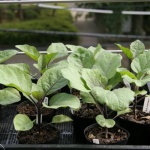
To get a tasty and bountiful eggplant crop, you must first grow strong and healthy seedlings. This culture is considered very capricious, therefore, you need to take care of seedlings when growing at home as correctly and carefully as possible.
Landing scheme
The standard landing pattern is 40x60 cm.
Growing and care
The culture is easy to care for. The minimum requirements for care are compliance with the irrigation regime, the use of nutritional supplements (if necessary), and periodic inspections of plants for possible pests.Seedlings are sown in February, and bushes are placed in open soils in May. Seedlings are also planted under the film in May.
Soil saturation with moisture is carried out regularly and in moderation. Excess irrigation can lead to fungal pathologies, but dryness also negatively affects the crop: it will not bear fruit. When a crop needs irrigation, it drops its leaves. Weed control and loosening processes are essential.
Fortified bushes need additional fertilizing, which are used as compost, manure, almond additives, ash. These additives are diluted with water and added under each bush. Re-feeding is carried out after flowering, when new leaves appear, and the bushes acquire splendor and beauty. Additives are applied after weeding the row spacings. The third and final feeding is carried out after the formation of ovaries.
Consider some other nuances of leaving after disembarkation.
- Top dressing should be done once every 10-14 days. You can use not only organic matter, but also special fertilizers, for example, it can be Fertika, Florizel, Agricola compounds.
- Before the flowering period, the bushes should be sprayed with a preparation with a long protection time: for example, "Aktara".
- To ventilate the greenhouse, keep it open all day in a warm period and 2-3 hours in cloudy weather. This helps the pollination process.
- The formation process is organized in the same way as in the case of tomatoes. The stepsons located below the fork are removed, and already above the bushes themselves form 2 stems. One bush during the season forms up to 6 large eggplants or up to 8 medium ones. In other words, up to 3-4 fruits per stem. When the ovaries are formed, the tops of the bushes are pinched, retreating 1 leaf from the ovary.
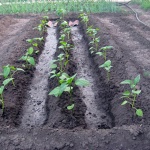
Planting eggplant is one of the most important stages in growing. When choosing a place for eggplants in your area, it is important to remember that this culture should be in warm soil, constantly illuminated by the sun. The plant is also very fond of spacious, open spaces, since its roots can grow over sufficient areas.
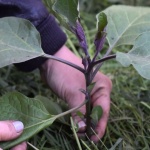
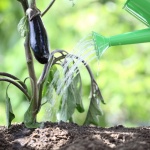
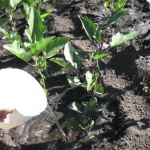
Disease and pest resistance
The culture is quite resistant to unfavorable weather conditions, infection with fusarium and TMV virus. Nevertheless, it can be affected by late blight, gray rot and black leg, so treatment with copper preparations will be in place, and the use of "Zircon" is beneficial for prophylactic purposes. For prevention, the place of planting of the culture should be changed annually.
Of the harmful insects for culture, the following parasites are dangerous.
- Colorado beetles. They are removed by hand or scared away with basil.
- Slugs. They are also removed manually, but with a significant amount of them, the soil is treated with a composition of lime, ash and tobacco dust.
- Spider mites. You can get rid of them with the "Arrow" or "Keltan".

Eggplant is one of the most demanding crops. For its successful cultivation, it is necessary to create optimal conditions, as well as to carry out prevention and fight against diseases and pests. Eggplant often infects both fungal and viral diseases. If treatment is not started on time, you can completely lose the crop.
